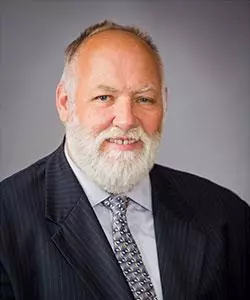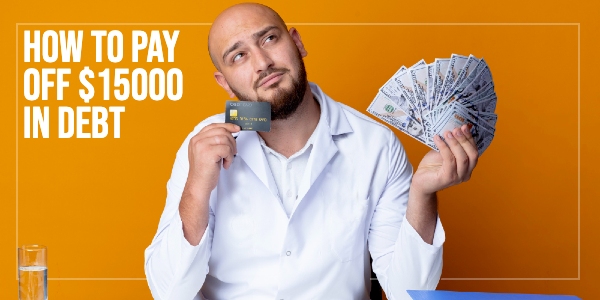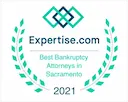Facing overwhelming debt can be a challenging experience, and you're certainly not alone in this struggle. Millions grapple with the weight of financial obligations, from credit cards and student loans to medical bills. It's like a looming cloud that affects one's sense of financial security. However, while it may seem intimidating, the journey to debt-free living begins with understanding how to tackle each debt type. With knowledge and determination, you can reclaim control over your finances.
How to pay off $15000 credit card debt
Here's a complete guide to help you pay off $15000 debt and regain control of your financial life.
Prepare a budget
Crafting a monthly budget is essentially laying out a roadmap for your finances. Think of it as a strategic plan for every dollar you earn. This invaluable tool empowers you to manage your money and acts as a beacon guiding you out of the credit card debt.
The magic of a budget lies in its simplicity. You get a transparent view of your financial landscape by keeping tabs on your income and expenditure. With this clarity, you can steer your funds in the right direction, ensuring your money works for you rather than the other way around.
"Budgeting doesn't mean making things overly complex. It's about knowing where each cent goes," says Darryl Stevens, the head honcho at Digitech Web Design. "Note down every expense, evaluate areas of excessive spending, and channelize savings towards clearing your debt."
You can make plenty of daily-life alterations to gather some extra savings. For instance, while grocery shopping, opting for store-brand products over pricier name-brands can save a significant sum over time. Similarly, being vigilant about household utilities can add up in savings. Simple habits like unplugging idle devices, switching off unnecessary lights, and being efficient with water use can make a noticeable dent in your bills.
Even if you have a large family, the combined effect of these minor tweaks can yield substantial monthly savings. By judiciously trimming your household budget, you're not just saving money but paving the way to financial independence.
Cash Over Credit: A Debt-Free Journey
Credit cards can sometimes be easy and convenient, especially when unexpected expenses pop up. However, if you're trying to tackle credit card debt, the frequent use of a credit card can make the climb to financial freedom steeper. It's hard to focus on erasing credit card debt when you're still adding to it, even if those expenditures once felt justifiable.
Lorenzo Nourchan, the brain behind Northstar Financial Consulting Group, offers a tangible solution. "Opt for cash transactions," he suggests. "There's an emotional connection when you physically part with your money, which isn't felt when merely swiping a card. This tactile experience brings about a heightened awareness of your expenditure."
Lorenzo continues, "It's about fostering a more conscious connection with your finances. Handling cash gives you a tangible sense of outflow, making you ponder before parting with it. This not only curbs the accumulation of further debt but can also aid in reallocating funds to address current debts."
That's the strength of a sound budget: it provides a clear map of your financial terrain. With a well-structured budget in place, you can manage necessities like groceries, fuel for your vehicle, and even the occasional indulgence without reaching for your credit card. The goal is clear - don't let your $15,000 debt mountain grow. Instead, arm yourself with the right tools and habits to steadily chip away at it, one dollar at a time.
Adopt a suitable debt repayment strategy
Selecting the right debt repayment strategy is crucial when dealing with financial challenges. Your unique financial situation should guide you in choosing the most suitable debt relief method to make steady progress toward becoming debt-free. Fortunately, several debt relief options are available to help you tackle your debt and regain control of your finances.
Debt Consolidation Loan
If you owe $15,000 on a credit card with a lot of interest, combining all that debt into one personal loan with a lower interest rate can be a good idea. This simplifies your debt repayment process because you only have to make one monthly payment and pay less interest overall.
But you need to be careful when doing this. The new loan's interest rate should be lower than the lowest interest rate on any of your credit cards. If it's not lower, consolidating your debt might not save you money, so you should think twice before doing it.
Try to take out a personal loan or explore debt consolidation loans when you have a good credit score. Otherwise, you may not qualify for a low-interest rate. In that case, you can consider paying credit card balances with a balance transfer card.
Balance Transfer Card
This credit card type has a 0% AP for the first 12-18 months. You can use this card to pay off your existing credit card debt and then clear this new debt within the introductory period. All you need to pay is the balance transfer fee.
Debt Settlement
Another strategy to pay off credit card debt is debt settlement. In this strategy, the credit card company agrees to forgive a portion of the debt and late fees in exchange for a lump sum payment. While it helps you pay off debt faster than other methods, it may affect your credit scores, which you can build fast.
Debt Management Plan
A Debt Management Plan (DMP) can be a lifeline if you struggle to cover the minimum payments on your debts. Crafted by experienced credit counselors, a DMP mediates between you and your creditors.
Under this arrangement, the credit counselor negotiates with creditors to secure reduced interest rates and more manageable monthly payments.
The beauty of credit counseling is that it's often quite affordable. Many counselors operate within nonprofit organizations, making their services accessible to a wider audience. While engaging in credit counseling won't dent your credit score, it's essential to note that any credit cards entered into your DMP will be off-limits for usage during the plan's tenure.
Debt Snowball Method
The Debt Snowball Method is a strategic approach to tackling your outstanding debts. Rather than zeroing in on debts with soaring interest rates, this strategy advocates for clearing out the smallest debts first while making minimum payments on other bills.
As you eliminate the tiniest debt, you then roll the momentum into addressing the next slightly larger debt, continuing in this fashion until all debts are settled. This method gives many a sense of achievement since smaller debts get cleared faster, offering immediate gratification.
However, there's a trade-off to consider: by not prioritizing high-interest debts, you might end up shelling out more in interest over time. While the debt snowball offers psychological wins, it might not always be the most economical choice in the bigger picture.
Debt Avalance Method
The Debt Avalanche Method presents an analytical approach to handling your debts. Under this strategy, you first prioritize clearing debts with the highest interest rates. By doing so, you target the most expensive debts, potentially saving you significant interest over time.
However, there's a caveat: debts with steeper interest rates often come with heftier balances, which means it could be a more prolonged journey to pay them off fully. While this method is financially savvy, it requires patience and persistence since the immediate satisfaction of seeing a credit card debt fully erased might take longer compared to other methods.
Pay debts as soon as you get paid.
Prioritizing debt payments immediately after receiving your paycheck is a wise financial move. By settling bills, particularly those on credit cards, right off the bat, you safeguard a portion of your income for essential living expenses, ensuring you're not left short by the time the next paycheck rolls around. Additionally, this proactive approach curbs the temptation to divert those funds towards non-essentials.
A seamless way to institutionalize this practice is through automatic withdrawals from savings accounts. Many service providers, especially credit card companies, offer facilities for automatic bill payments. While it's always essential to meet your monthly obligations, going the extra mile by paying more than the minimum amount can fast-track your journey towards debt-free, giving you peace of mind and financial freedom.
Pay more than the minimum payments.
Going beyond the bare minimum is essential when it comes to credit card debt repayments, especially in the realm of credit card debt. Relying solely on the minimum payments, which usually account for just 2-3% of your total outstanding balance, can trap you in a seemingly never-ending cycle of credit card debt. Moreover, this approach can cost you a fortune in interest over time.
You accelerate the debt-clearing process by paying significantly more than the required minimum. For instance, remitting at least double the minimum payment can drastically reduce your debt's timeline and the highest interest rate. Naturally, the more you contribute monthly, the quicker you'll find yourself debt-free.
You might have to reassess and adjust your spending habits to achieve this, perhaps making certain sacrifices or seeking out areas in your budget where you can economize and save money. Allocating these savings toward credit card debt can significantly affect your financial health.
Get additional income
Supplementing your primary income can significantly boost your ability to tackle that $15,000 credit card debt.
In today's digital age, myriad opportunities are available to bolster your earnings, many right at your fingertips. Through smartphone apps, you can venture into the world of ride-sharing with platforms like Uber or Lyft. Services such as Instacart offer avenues for grocery shopping or delivery. Moreover, even in more remote or rural locales, app-based tasks remain accessible, broadening the spectrum of possibilities.
The online realm isn't the only source of opportunities. Platforms dedicated to freelance and part-time positions abound; a quick search for "freelance jobs" can open up a trove of potential gigs.
Yet, let's not discount more traditional avenues. Local newspapers or community publications can be gold mines for job listings. These might include babysitting, dog walking, or even newspaper delivery. These physical listings can provide a more comfortable, tangible route for those opposed to digital job hunting.
Whatever path you choose, ensuring it aligns with your availability and energy levels is paramount. But, above all, remain steadfast in channeling the additional earnings towards chipping away at your debt. This focused approach can set you on a swifter trajectory to a debt-free future.
Consult a professional
It can be stressful if you have a large debt of 15,000 on the credit card that doesn't seem to go down no matter what you do. If you're feeling overwhelmed, it might be a good idea to seek help from a professional to manage your credit card debt.
Consulting financial advisors can help you on your debt-free journey. They can help you devise a plan to tackle your debt effectively, make it more manageable, and build an emergency fund. It's a way to get expert guidance and support when dealing with financial challenges.
Remember, each payment you make brings you closer to your goal. Celebrate your achievements along the way, no matter how small they may seem.
Moreover, if needed, you may seek support and guidance from financial experts, friends, or support groups.
Final Thoughts
Embarking on a path to be free from the clutches of debt can feel like a daunting voyage. But with unwavering resolve and a well-planned strategy, the destination is within reach. Tackling a $15,000 debt necessitates a blend of actionable steps, savvy financial maneuvers, and informed guidance.
Indeed, there's a rich tapestry of strategies out there, spanning from meticulous budgeting to diverse debt repayment methods, all underscored by a commitment to fiscal prudence. Yet, it's essential to recognize that debt solutions aren't monolithic. Tailoring a plan that resonates with both your financial landscape and personal inclinations is of the essence.
You might resonate with the immediate victories of the debt snowball, the long-term financial savvy of the debt avalanche, or perhaps a hybrid of multiple strategies. But irrespective of the chosen path, the bedrock of your journey should be steadfast consistency and discipline. Your commitment to the process and the right tools and strategies will see you through to a brighter, debt-free horizon.









